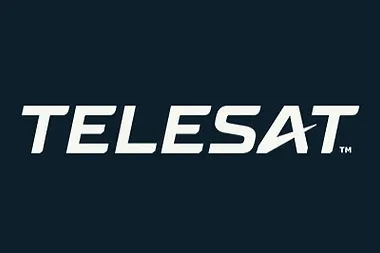Strasbourg, France, 12 February 2021 – Telesat, one of the world’s largest satellite operators, announced today that it has entered into an agreement with Thales Alenia Space to be the prime manufacturer of Telesat’s global LEO constellation, Lightspeed, initially comprised of a fleet of 298 next-generation satellites integrated with an advanced ground network. Lightspeed is the most innovative, cutting-edge broadband satellite network ever conceived. Thales Alenia Space and its affiliate Telespazio have made a Lightspeed capacity commitment in connection with the agreement.
Telesat and Thales Alenia Space have engaged in substantial and sustained collaboration on Lightspeed’s innovative design. Specifically, Lightspeed has been optimized to serve the fast-growing broadband connectivity requirements of fixed and mobile network operators, aeronautical and maritime users, enterprise customers and governments. Operating under Telesat’s global Ka-band priority spectrum rights, the first Lightspeed satellites are expected to be launched in approximately two years, with customer beta testing beginning shortly thereafter and commercial services commencing in the second half of 2023.
“We are very pleased to be moving forward with Thales Alenia Space on Lightspeed, the most advanced and capable LEO network in the world,” stated Dan Goldberg, President and CEO of Telesat. “As the world’s leader in manufacturing and implementing cutting edge global satellite constellations, Thales Alenia Space is the right industrial partner to deliver Lightspeed, a fully integrated global communications network that will revolutionize satellite-delivered broadband and give Telesat and its customers a decisive competitive edge in this high growth market.”
Goldberg added: “The name Lightspeed underscores the essential speed advantages inherent to Telesat’s LEO design. Lightspeed is the most technologically capable satellite communications network in history and exploits the latest advances in space-based data processing, laser communications, digital antenna technology and machine learning.”
Lightspeed will provide fibre-like connectivity across the entire Earth at price points that allow network operators to efficiently and economically enhance their network coverage, performance and profitability. Designed with a deep understanding of the bandwidth-intensive applications and cloud-based network connectivity that users require, Lightspeed will eliminate the hurdles that telecommunications service providers face today when incorporating satellite into their networks.
Operating roughly just 1,000 kilometres above Earth in LEO, Lightspeed will be free from the long latency delays and capacity limitations that are inherent to satellites in geostationary and medium Earth orbits. In addition, Lightspeed satellites incorporate leading-edge technologies and features, including:
-
Sophisticated phased array antennas on each satellite that are combined with advanced beam hopping technology to create approximately 135,000 beams that can dynamically focus multiple Gbps of capacity – an order of magnitude higher than any other system – into demand hot spots like remote communities, large airports or major seaports;
-
Nearly 1,200 high capacity optical links – four on each satellite – that combine to create a first-ever, highly resilient, flexible and secure space-based IP network, moving data across the network and around the world at the speed of light;
-
Data processing in space, including full digital modulation and demodulation on the satellite, coupled with a revolutionary end-to-end network operating system, that improves link performance and gives customers unprecedented flexibility for routing traffic across the globe, eliminating gateway hops for the fastest, most secure, end-to-end delivery of data; and
-
A patent-pending architecture for the constellation of satellites, which features satellites operating in both polar and inclined orbital planes. This results in true pole-to-pole global coverage, concentrating capacity in areas where it is most needed to maximize network efficiency and achieve superior unit cost economics.
Telesat is developing affordable end-user terminals, with a range of antennas and modems optimized for each of the market verticals Lightspeed will serve. In addition, Lightspeed leverages industry-wide network interface standards to enable simple, seamless integration with customers’ terrestrial networks, without the need to integrate proprietary hardware or software.















